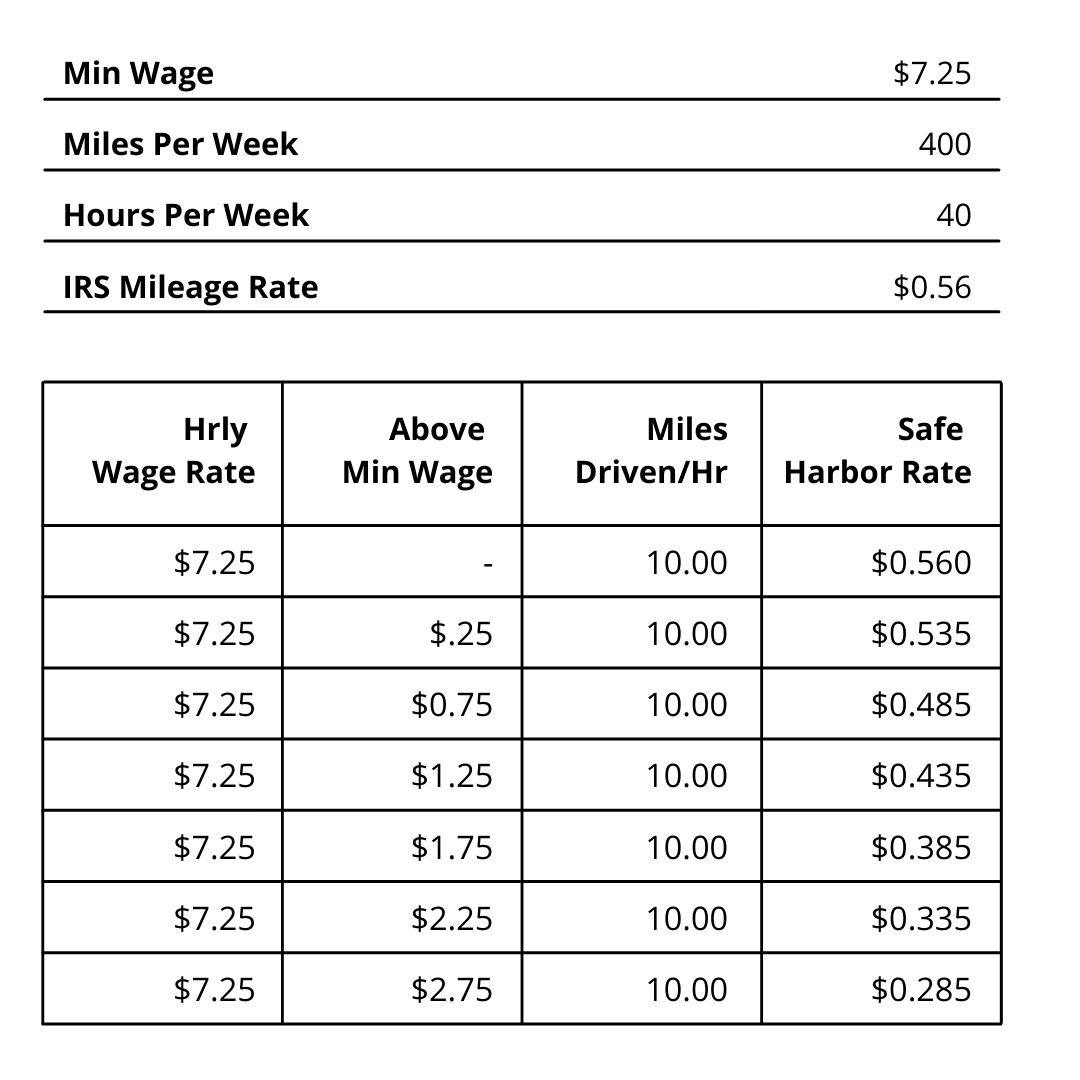Here at CompanyMileage, we are regularly asked what the correct, fair and compliant reimbursement rate for employee business miles is. Unfortunately, the answer to that question is not always so simple for every company. A good rule of thumb is to follow the IRS standard mileage rate. This rate is determined by the IRS based on an annual study of the fixed and variable costs of owning and operating a vehicle in the US, such as depreciation, insurance, repairs, tires, maintenance, gas and oil.
Ultimately, the IRS mileage rate is simply a suggestion, though. Vehicle costs vary widely across the nation, and the IRS rate can’t be a one-size-fits-all solution. Companies should also consider other factors such as the type of vehicles their employees drive and the region of the country they operate in.
While reimbursing employees at a rate that exceeds that set by the IRS for the tax year creates additional issues for businesses, there’s nothing that says you can’t reimburse at a lower rate. However, doing so has the potential to create negative consequences, as well, especially if you haven’t considered one additional important factor: employee wages.
Employee Reimbursement & Labor Laws
If you reimburse employees who are near the minimum wage rate, it is important to ensure that the mileage reimbursement rate paid is not going to cause labor law issues.
The Federal Labor Standards Act (FLSA) has narrow exceptions concerning mileage reimbursements that employers must understand if their employees are earning at or near the minimum wage. This part of the law is known as the kickback rule because it governs money kicked back to the employer in the form of under-reimbursed mileage expenses. If the value of those so-called kickbacks pushes an employee’s wages under the minimum wage, a wage and hour issue is created.
All across the country, the issue of kickbacks has found its way to the courts. Several years ago, two large Domino’s Pizza franchises found themselves in court defending class-action suits from delivery drivers who were being paid a flat $1 per-delivery fee. They claimed they were being underpaid by $1.30 per delivery and $3.25 per hour. These cases illustrate the real-world risk of under reimbursing employees for the use of their personal vehicles.
Below is a simple chart to help understand these relationships.
As the hourly wage rate increases, you’ll notice that the safe harbor rate falls by an equivalent amount. In other words, the more you pay your employees, the more leeway you have in choosing a mileage rate for your business that is less than the IRS rate. If you pay your employees right at the federal minimum wage, though, you must reimburse employees at the IRS rate to avoid kickbacks.
There Is a Solution
The option to reimburse employees at a flat rate as Domino’s did for its delivery drivers may seem like the easier choice, more affordable choice — at least until you find yourself defending your actions in court. With our automated mileage tracking software, SureMileage, you can maintain higher rates with the confidence that our system is handling the whole process. From documenting accurate trip mileage to submitting expense reports and managing review and approval, every stage of the mileage reimbursement process is centralized on SureMileage.
On average, CompanyMileage clients save 25% on their mileage reimbursement costs by ensuring they only pay for the miles employees actually drive. To see how our platform works for yourself, request a demo today!
